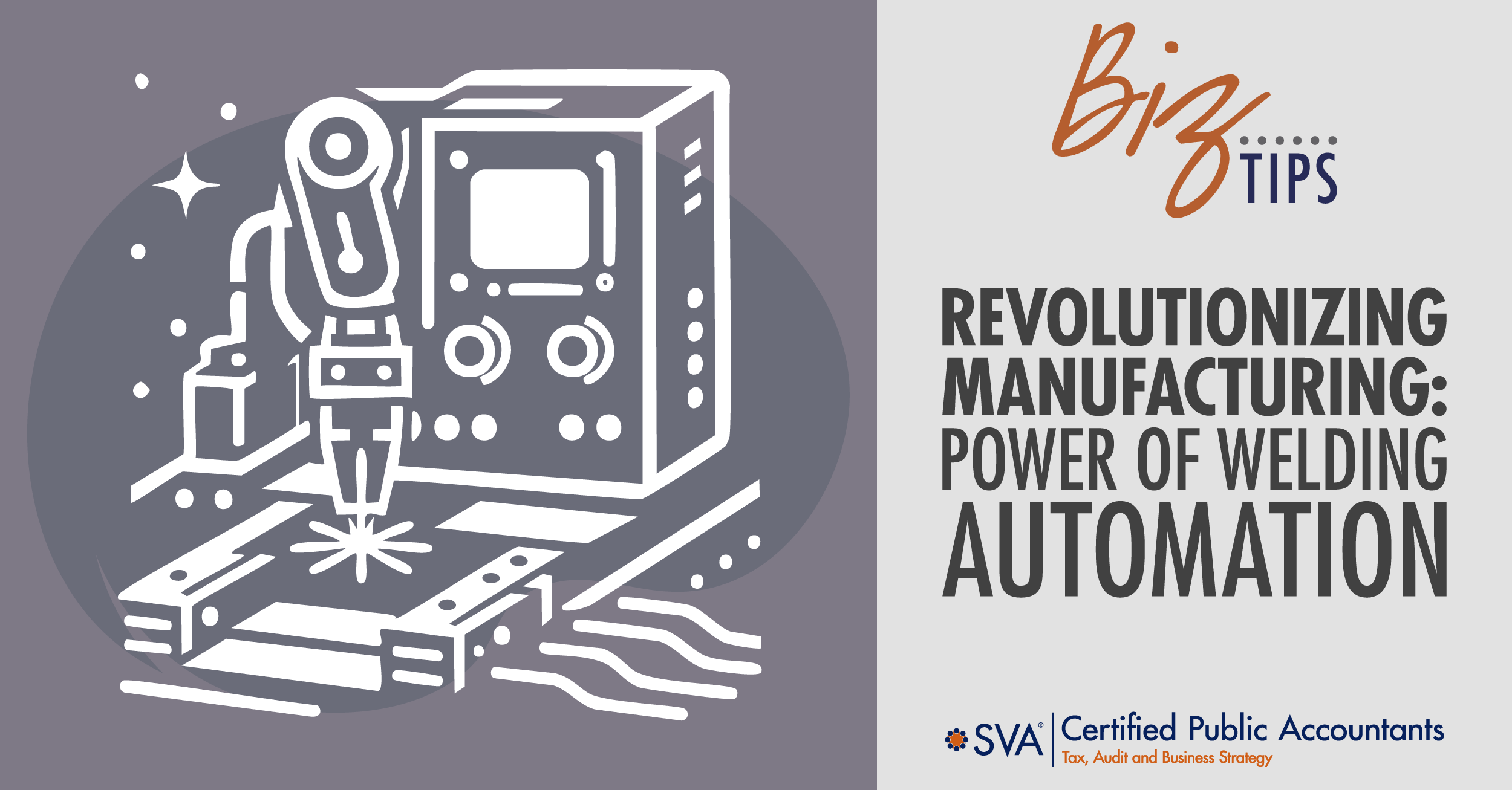Many manufacturing companies use welding or metal fabrication to make products and machines, from small components to fusing larger pieces of metal. Welding is in demand in manufacturing, and it’s only projected to increase, as the American Welding Society says we will need an estimated 330,000 new welding professionals across the United States by 2028.
A shortage of welders is not news. However, more manufacturers are turning to welding automation to meet production demands and compete on a global stage. Automated welding machines offer several benefits that can improve your welding processes, the quality of your products, and your operations.
For manufacturers considering welding automation in their companies, here are some considerations before making the move, including the benefits and challenges.
What is Welding Automation?
Welding automation uses robotic technology and equipment to perform welding tasks with a high degree of accuracy, consistency, and efficiency.
Instead of using traditional manual labor, automated welding machines integrate specialized machinery guided by software programs to perform precise and repeatable welds based on your configurations.
The Benefits of Welding Automation
Aside from the long-term shortage of skilled welders, several pressures are causing manufacturers to turn to automated welding. Global competition in manufacturing leads to ambitious goals to improve quality, efficiency, and productivity.
The nature of automated welding, with automated welding machines guided by software to perform welding tasks, means that the machines can perform welds with high precision and repeatability, leading to increased quality and other benefits for manufacturers across industries.
Enhanced Productivity
Automated welding machines can operate continuously without breaks, increasing output compared to manual welding operators. They don't get tired or need breaks, allowing them to maintain a consistent pace throughout production runs.
In addition, automated welding machines often complete welds faster than skilled human welders. The speed and accuracy of robotic welding arms enable quicker welding cycles, translating into higher throughput and faster delivery of finished products.
Improved Quality
Quick welding is useless to manufacturers if it’s sloppy work. Consistent weld quality is critical for structural integrity and safety of welded components. Human welders, who sometimes get tired and have differences in experience and skill, vary in the quality of welding they do on the job each shift.
Automated welding machines perform each weld precisely according to your programmed parameters. The software controls wire feed speed, voltage, and travel speed, producing repeatable welds and creating finished products with fewer defects.
Cost Savings
If this all sounds fantastic, you might be in for a shock with the upfront cost of automated welding equipment. However, the long-term cost savings might be worth it. As mentioned, automated systems reduce labor costs, including all the potential safety hazards that human welders endure and long-term repetitive stress injuries.
Also, improved efficiency and productivity of automated welding can lead to lower costs per unit. How? Automated welding minimizes material waste by reducing defects that would require rework or scrapping parts.
Tax Advantages
When investing in automated welding machines and systems, manufacturers should consider potential tax benefits that can help offset the upfront costs. The IRS offers incentives such as Section 179 and bonus depreciation for expensing welding automation equipment and related software.
Section 179 of the IRS Tax Code allows your manufacturing business to deduct the full purchase price of qualifying equipment and software you buy or finance during the tax year, rather than depreciating the costs over time. This often provides tax savings by reducing your overall taxable income. For 2024, the Section 179 deduction limit is $1,220,000 on up to $3,050,000 in qualifying purchases.
Another tax incentive, bonus depreciation, allows manufacturers to deduct a large percentage of the purchase price of eligible new property the year you start using it in your operations. This accelerated schedule allows quicker depreciation deductions compared to conventional schedules.
These tax advantages, combined with the other benefits of automated welding, can improve the overall ROI of welding automation for manufacturers. However, there are eligibility criteria for these tax incentives, so make sure to consult with your SVA professional before relying on these numbers for your business.
Safety Advantages
Welding involves hazards like intense heat, bright arcs, fumes, and heavy materials, not to mention long-term repetitive stress injuries such as back pain, shoulder injuries, and carpal tunnel syndrome. Automated welding machines are designed with safety features to prevent accidents and injuries.
By reducing hazards that human welders experience, welding automation can lead to cost savings through reduced workers' compensation claims and insurance premiums.
Challenges and Considerations
While welding automation offers many advantages, it also presents challenges that manufacturers should consider, which might vary depending on your operations.
Investment Costs
Automated welding machines are a major capital expenditure that requires planning, but there’s more to it than equipment and software. You might also need to budget to modify your facility if you don’t have the space for automated welding machines or make other changes in your production lines. Other associated expenses might include costs for installation, programming, and training employees to run the machines.
Before committing to welding automation, consult with your experts, including our SVA manufacturing experts, and collect data from your human resources team to create an accurate picture that will help you conduct a thorough cost-benefit analysis and ROI projection.
Make sure to consider the potential long-term cost savings from improved productivity and efficiency of welding automation.
Training Requirements
Although automated welding reduces the need for skilled welders on the floor, you will need people trained in operating, programming, and maintaining the automated welding machines. You’ll need to plan for time and cost to train staff on the new equipment.
Some manufacturers keep at least one skilled welder who can perform manual welding tasks if needed, such as during system downtime or for components that can’t be welded by automated welding machines.
Equipment Repair/Downtime
Like any complex machinery, automated welding machines sometimes break down or require scheduled maintenance, causing downtime. You can minimize disruptions by planning ahead and knowing how and where to get prompt repair services or making a plan to use manual welding or redundant equipment for downtime.
If you’re considering welding automation, also ask the automation provider about the availability of service technicians who can quickly fix equipment issues. You should also make a plan for preventive maintenance, like any other equipment, to maximize uptime.
Equipment Footprint
Automated welding machines can range from compact units to large robotic centers requiring a lot of area. You’ll want to make sure you have adequate facility space to accommodate the equipment's footprint, including any safety guards or other components.
If you’re planning a future expansion or new facility, carefully address automated welding machines in your layout planning to integrate them efficiently into your production line.
Is Welding Automation Right for Your Business?
Welding automation helps many manufacturers boost productivity, quality, safety, and cost efficiency amid the skilled labor shortage. While the initial cost and time investment can turn off some manufacturers, the overall returns of welding automation might be a good fit for your business.
As manufacturing advances, automated welding can help you streamline your operations and improve profitability.
As welding automation becomes more common in manufacturing, we hear from more of our clients that they’re taking advantage of this technology. If you’d like to hear how other manufacturing clients implemented welding automation or you’d like help calculating your ROI, reach out to our professionals to learn more.
© 2024 SVA Certified Public Accountants

